Délicieux Discoveries: Students Delve into French Food Culture

Language and culture share an inseparable bond. Embedded within a language are the cultural norms, values, and perspectives of its speakers. Language also serves as a bridge for fostering mutual understanding and respect across cultures. Exploring various cultures nurtures an appreciation for their unique perspectives, traditions, and lifestyles. Understanding the culture intertwined with a language is essential for proficient communication and genuine fluency. This is why our Year 9 French students are delving into the diverse regions and cultures of France, immersing themselves in the richness of its culinary heritage—a deliciously insightful approach to learning!
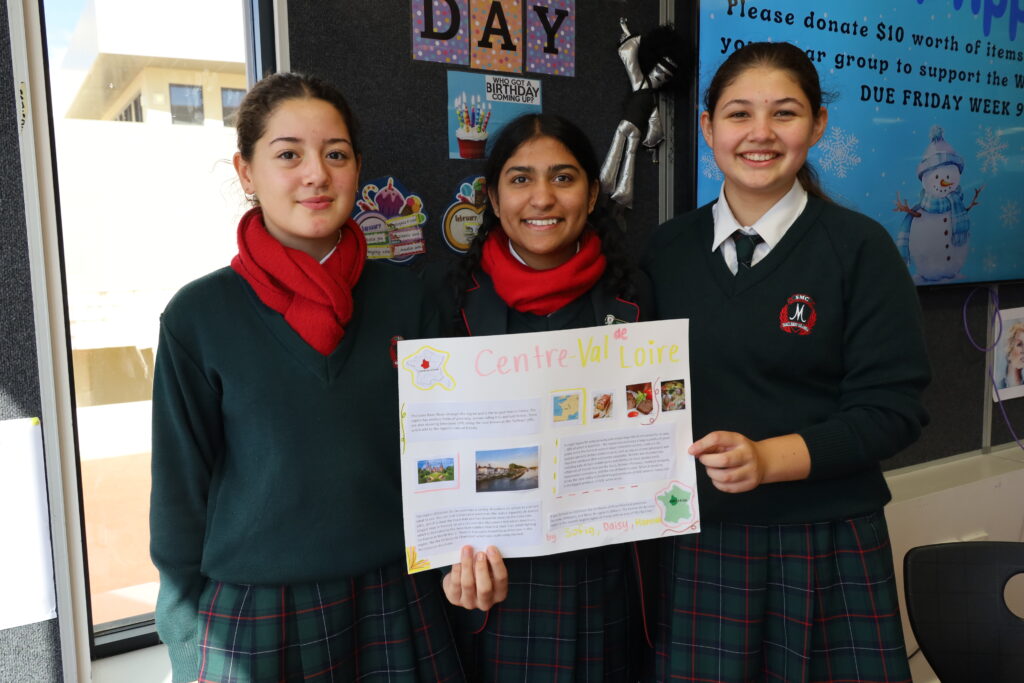
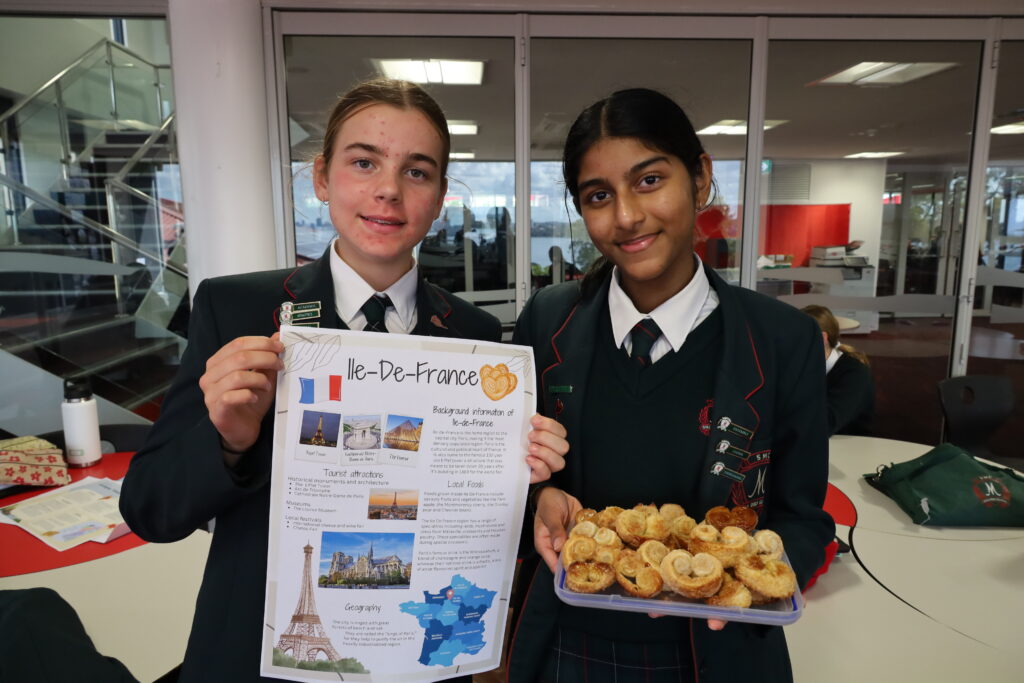
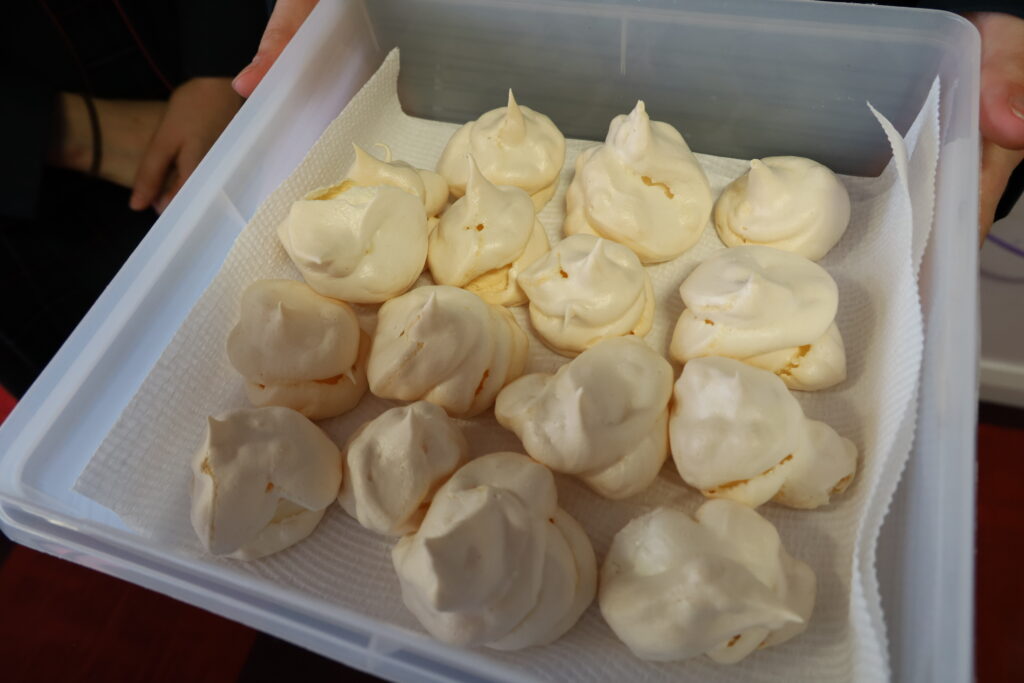
The girls began by presenting their region to the class, providing details on top tourist attractions, historical significance, and local culinary delights. Following this introduction, they proceeded to prepare a traditional dish from their region to share with their classmates. Some of the girls shared with us their amazing creations below:
Isabel and Alyssa: Provence Alpes Cote D’Azur / La Pompe de Noël
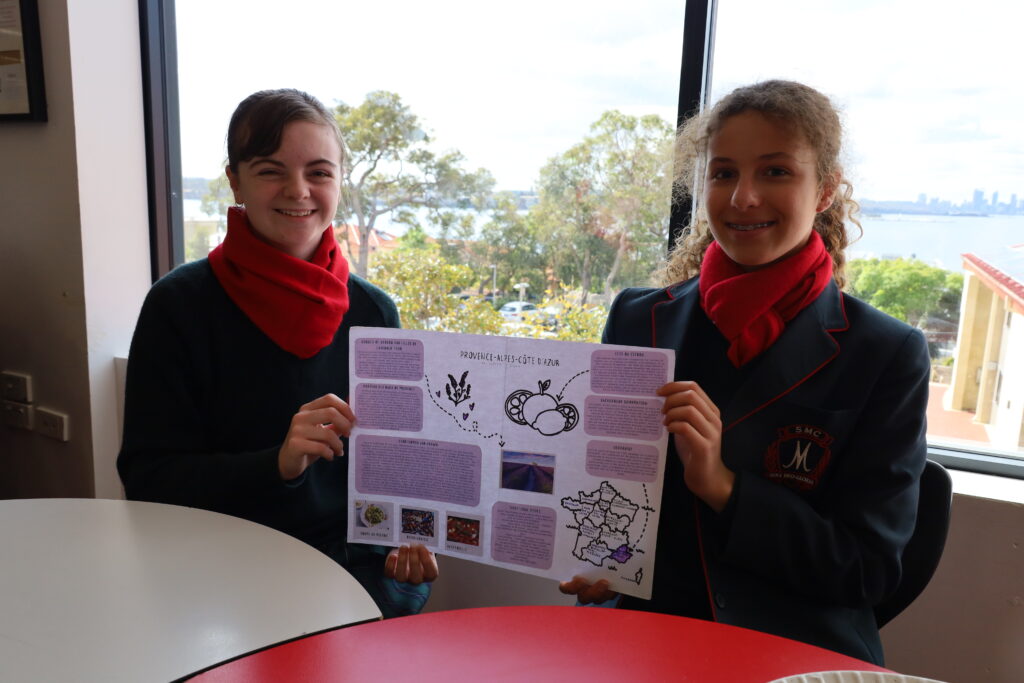

What region did you choose and why did you choose this region?
We chose the south-east region of Provence-Alpes-Côte-d’Azur (also known as Région Sud or PACA). We chose this region as we wanted to make Ratatouille, the traditional vegetable stew of this area, for our assignment dish. Unfortunately, we were unable to make Ratatouille due to unforeseen circumstances but continued with our assignment on the region. This taught us to be adaptable and appreciate the region for what it is, instead of just one delicacy. We also wanted to choose this reason for its geography. PACA is located next to the alps, but lined by the coast in many instances so has excellent beaches and a thriving seafood industry, both of which we wanted to explore in further detail throughout this assignment.
Did you know much about the region prior to starting the assessment?
No. We knew little about the region prior to this assignment which made us more excited to learn! We have gained extensive knowledge in many aspects of not only the PACA region, but French culture in general.
What dish did you decide to make and why?
The dish we decided to make was La Pompe de Noël (Pompe à l’huile), a traditional dish from the Provence. Two wheels are baked at once, one to be consumed on Christmas Eve (Le Reveillon) and the other on Christmas morning. It is a ‘flat’ brioche bread made with olive oil, orange blossom water and orange zest. These ingredients are used as they are natively farmed and traditionally grown in Provence.
Did you discover any interesting facts or stories about the region while working on this project?
One interesting thing we have discovered is Fête Du Citron, a festival of the region that celebrates all things Provence Citrus! Fête Du Citron is a carnival where displays made of nothing but vibrantly coloured citrus are scattered around the city to celebrate the coming of spring.
Jade and Jessica – Bretagne / Crêpes
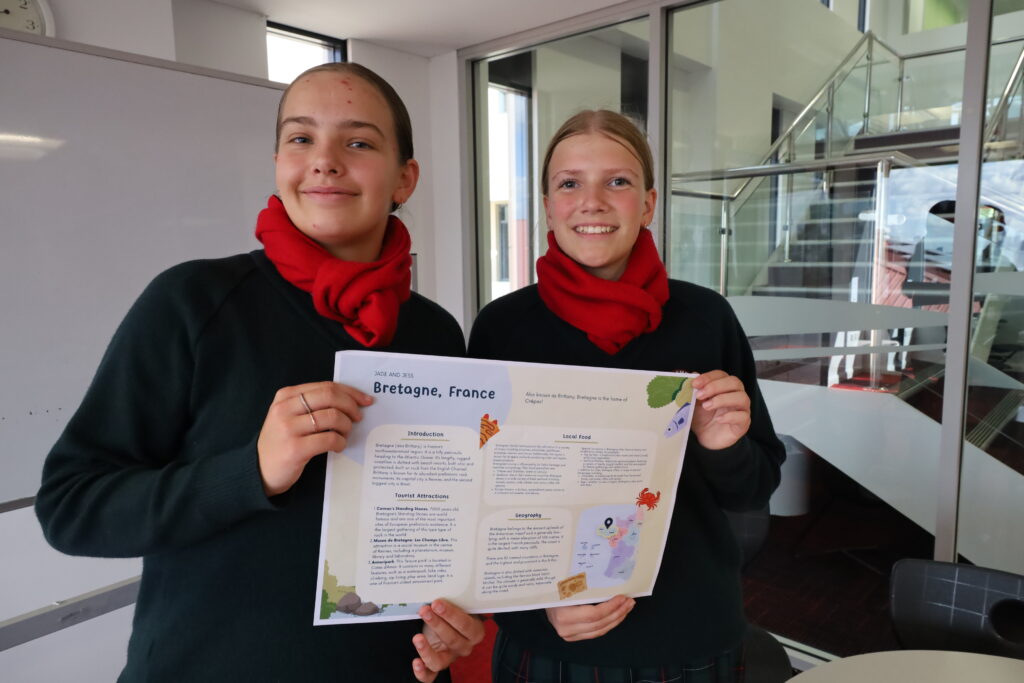
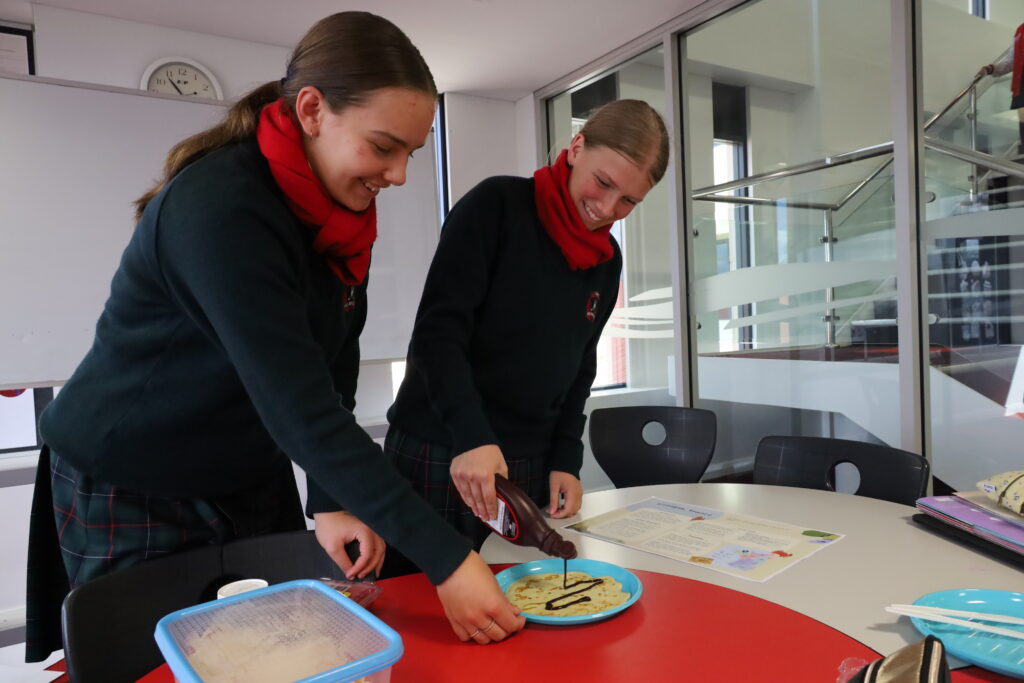
Which region did you choose and why?
We chose Bretagne (aka Brittany) because we were, and still are, interested in the region’s prehistoric history and local food, such as crêpes, a variety of shellfish, vegetables and pastries.
Did you know much about the region prior to starting the assessment?
No, we did not, but we agree that learning a new region, rather than a city like Paris, was more fun to learn and better for our research. During our assessment, our research might have been harder to find, but as a team, we thought it was more interesting and enriching for the class and ourselves.
What dish did you decide to make and why?
We made dessert crêpes, with fruits found in Bretagne. While there are also savoury crêpes, we believe sweet would be more appealing. Although crêpes were traditionally made with buckwheat flour, we decided on a more modern approach, and it tasted delicious! We cooked it together over the weekend, and it was a great experience for both of us.
Did you discover any interesting facts or stories about the region while working on this project?
Bretagne hosts an array of Standing Stones in Carnac. They are 7000 years old, the largest gathering of this type of rock in the world, and one of the most important sites of European prehistoric existence! There are 82 named mountains in the region. Bretagne is the most northwestern region in France, heading out towards the Atlantic Ocean in peninsula form.
For those interested in giving it a try, we have included a crêpes recipe below:
Crêpes Recipe
Ingredients
250 grams of flour
Half a litre of milk
2 tablespoons sugar
4 eggs
Pinch of salt
50 grams melted butter
Instructions
1. Put the flour, salt and sugar in a bowl.
2. Make a well in the middle of the mixture and add the eggs.
3. Mix slowly. When the mixture starts to become thick, add milk slowly.
4. Add the melted butter and mix well.
5. Using a ladle, pour the mixture onto a pan, making sure it cover the whole pan and cook the crêpes.
6. Cook for about a minute and then flip it over, allowing the other side to cook for a minute or until brown.


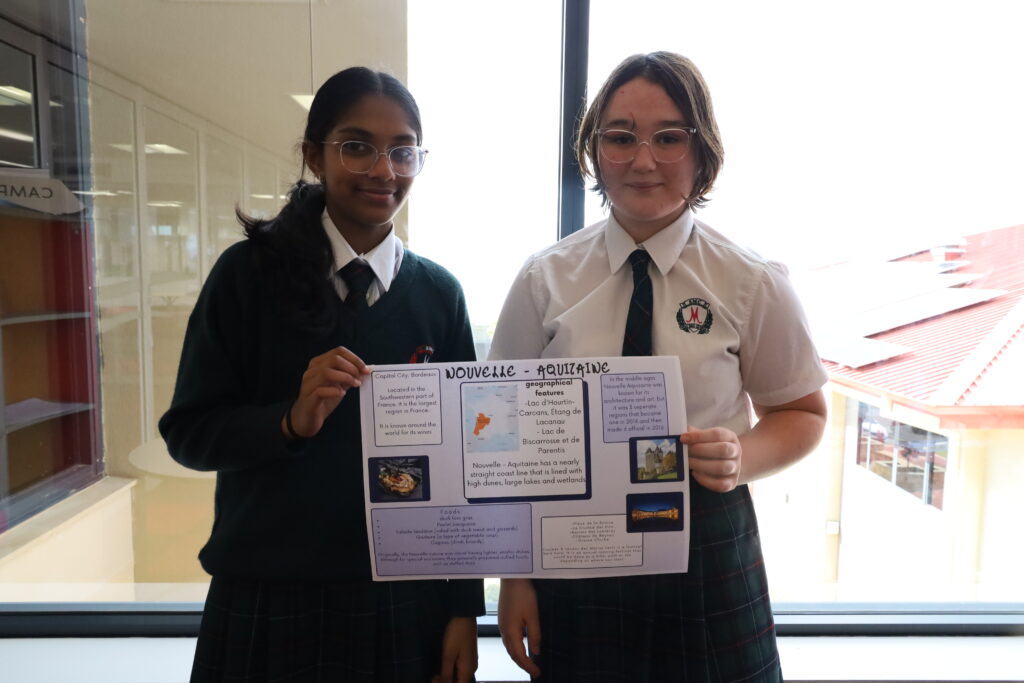
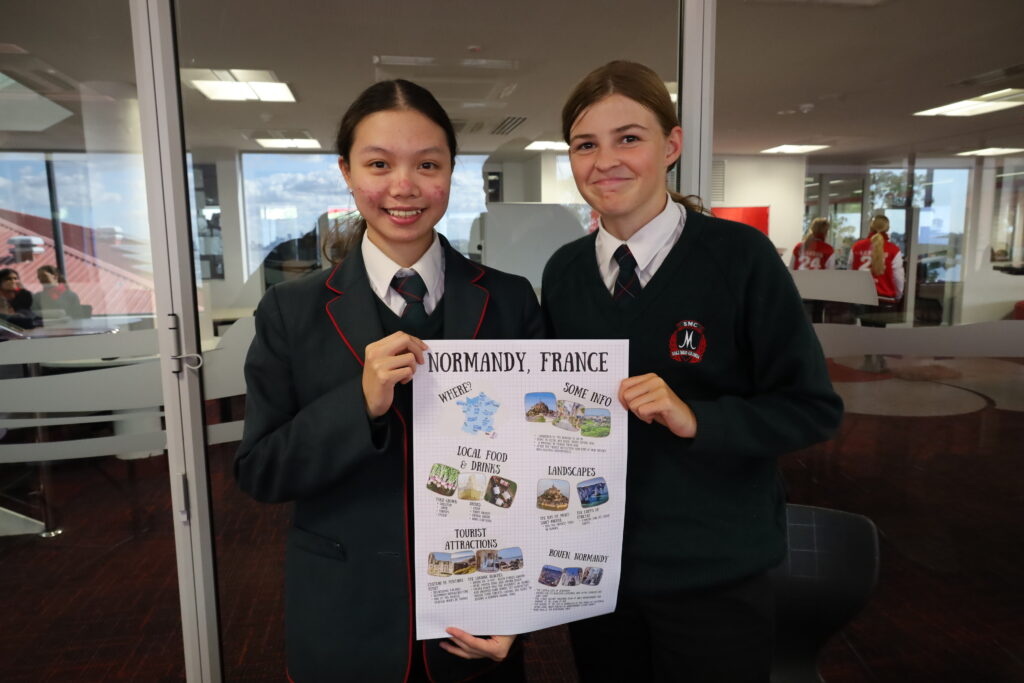
Congratulations to everyone involved. You have showcased the different regions very well!

Building Respectful Relationships – Jennifer Oaten
Discover effective strategies for building respectful relationships in schools to combat violence against women. Learn how promoting gender equality and empowering students can create a safer, more respectful society.

Embracing Tradition: Praying the Rosary
One of the cherished traditions that we hold dear is our weekly gathering in the chapel to recite the Rosary. The Rosary isn’t just a routine prayer; it’s a sacred tradition that brings us together in faith and love.

Weekly Wrap Up: Term 2, Week 5, 2024
Week 5 is done and dusted! So many exciting things happened this week and you can find all the highlights in this Weekly Wrap Up!
- Creativity, Featured, Learning for Life
Author: Santa Maria College
Santa Maria College is a vibrant girls school with a growing local presence and reputation. Our Mission is to educate young Mercy women who act with courage and compassion to enrich our world. Santa Maria College is located in Attadale in Western Australia, 16 km from the Perth CBD. We offer a Catholic education for girls in Years 5 – 12 and have 1300 students, including 152 boarders.






